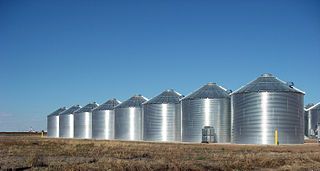From Guest Blogger Nick: Energy Storage – the Next Breakthrough Technology?

A major issue with renewables is their variability. The sun doesn’t shine at night, which is when we want electricity for lighting, heating, and other needs. Wind is variable: sometimes there is too little, sometimes high winds generate too much power – Denmark has been exporting power to Germany when it has a surplus, but this is not satisfactory. As more renewables are used for power, the problem of storage becomes acute.
One method of storing electricity is by using batteries – lead-acid electric batteries have been around for about 100 years. Unfortunately they are heavy, inefficient, and are difficult to dispose of. Newer types of batteries use rare earths or valuable components. So while batteries are going to be around for the foreseeable future, they are not a complete solution to the problem. Fuel cells were invented at around the same time as batteries, but did not catch on till the 1960’s when spacecraft needed a clean, lightweight system of energy storage. This technology is developing and undoubtedly will be useful in the future as part of the storage equation.
Electricity can also be used as “pumped storage” where water is pumped upward into a reservoir by “spare” electricity, then used to generate hydro-power when needed. Unfortunately this is a specialised method not applicable to anyone who doesn’t have a high-level lake nearby.
A promising storage technology is compressed air. Air is free, and can be pumped into underground mines or storage devices, under pressure, then released to power a turbine when it is needed. There is a lot of research going into this method at present, but there are various technological constraints to do with heat loss that make it problematical. Compressed air systems have advantages over conventional batteries including longer lifetimes of containers and lower material toxicity.
When there are sufficient electric vehicles (EVs) in circulation, these will be able to be used as storage systems, because at any time a percentage will be plugged into the grid and thus able to send their power back if it is needed. So the EVs will function as a giant battery.
It is difficult to predict the future, but whatever happens, renewable energy is going to be a major part of it. That means that a variety of methods of energy storage will be essential to the stable functioning of the power systems. Germany is leading the way by launching a subsidy on 1st May where energy storage attached to photovoltaic systems will receive funding. The Germans pioneered Feed-in-Tariffs to kick-start their massive deployment of solar panels, and now they are moving forward to make it worthwhile for a property owner to have energy storage as part of their renewable system.
Often the UK follows continental initiatives in the conservation arena so it may be that energy storage systems will receive subsidy so they can be implemented more quickly than might otherwise be the case. It would not be outside the parameters of the Green Deal to add energy storage as a system which could attract GD finance, though energy consumption would have to be monitored using an Energy Performance Assessment and Certificate, as the Green Deal only applies where the “Golden Rule” is met – that the energy system funded should actually reduce consumption and save money, which is really just common sense.

Our planet’s greener future depends on nurturing our natural and abundant photovoltaic vs monocrystalline resources. They’ve got the tax credit.
60 to $0 25 a gallon. Americans do not need more effective ways to kill people.
We sold 6 9 million compared to an income tax benefit of $4.